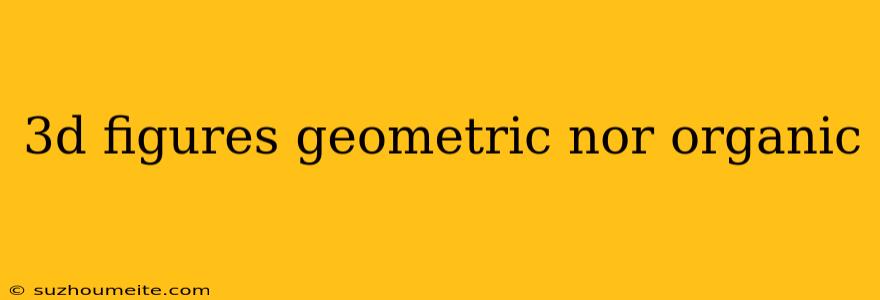3D Figures: Geometric vs Organic
In the world of 3D modeling and computer graphics, there are two fundamental types of 3D figures: geometric and organic. Understanding the differences between these two types is crucial for creating realistic and engaging 3D models.
Geometric 3D Figures
Geometric 3D figures are those that are composed of simple shapes, such as cubes, spheres, cones, and cylinders. These shapes are combined to create more complex forms, but they maintain their geometric characteristics. Geometric figures can be further divided into two subcategories:
Polyhedra
Polyhedra are geometric figures with flat faces and straight edges. Examples of polyhedra include cubes, pyramids, and prisms. These shapes are often used in architectural visualization, product design, and engineering.
Curved Shapes
Curved shapes are geometric figures with smooth, continuous surfaces. Examples of curved shapes include spheres, cylinders, and cones. These shapes are often used in industrial design, product design, and animation.
Organic 3D Figures
Organic 3D figures are those that are composed of complex, natural shapes, such as plants, animals, and humans. These figures often have smooth, curved surfaces and lack the sharp edges and flat faces of geometric figures. Organic figures can be further divided into two subcategories:
Natural Forms
Natural forms are organic figures that are inspired by nature, such as plants, flowers, and animals. These shapes are often used in film, animation, and video games.
Biological Forms
Biological forms are organic figures that are inspired by living organisms, such as humans, animals, and insects. These shapes are often used in medical visualization, forensic analysis, and special effects.
Comparison and Contrast
While geometric and organic 3D figures have distinct characteristics, they can also be combined to create hybrid models that incorporate both geometric and organic elements.
| Characteristic | Geometric | Organic |
|---|---|---|
| Shape | Simple, mathematical | Complex, natural |
| Edges | Sharp, defined | Smooth, curved |
| Surfaces | Flat, faceted | Smooth, continuous |
| Inspiration | Mathematics, architecture | Nature, biology |
Conclusion
Understanding the differences between geometric and organic 3D figures is essential for creating realistic and engaging 3D models. By recognizing the characteristics of each type, artists and designers can choose the right approach to create models that meet their needs and goals. Whether you're creating a futuristic cityscape or a realistic animal model, understanding the distinction between geometric and organic 3D figures will help you achieve more accuracy and detail in your work.
